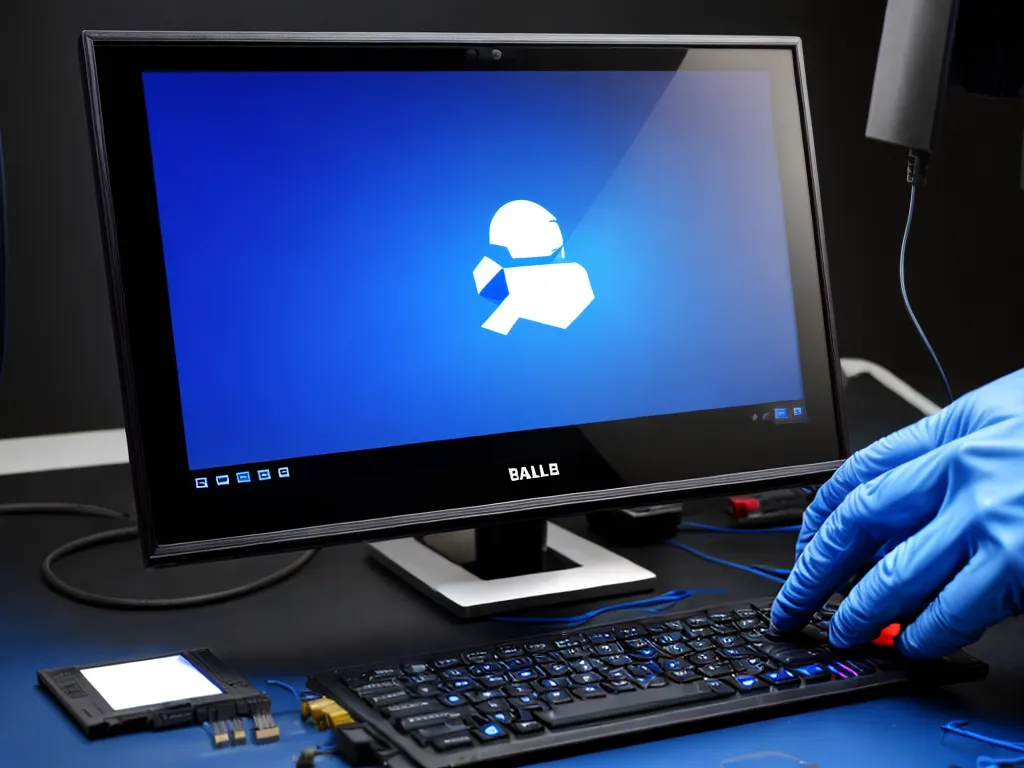The dreaded Blue Screen of Death (BSOD) can stop you in your tracks when using a Windows PC. Tracking down the root cause often requires some sleuthing to identify faulty hardware components. Here’s a comprehensive guide to diagnosing and resolving BSODs related to failing PC hardware.
Common Causes of Hardware-Related BSODs
BSODs can occur for many reasons, but these are some of the most common hardware-related culprits:
Failing RAM modules
RAM (random access memory) errors are a prime suspect with BSODs. Faulty RAM sticks or slots can corrupt data randomly, leading to crashes.
Overheating components
Excessive heat can cause system instability and crashes. CPUs, GPUs, and other components can overheat if coolers fail or thermal paste dries out.
Faulty hard drives
Hard disk drives (HDDs) that develop bad sectors or mechanical failures can cause read/write errors that crash Windows.
Buggy device drivers
Device driver software allows components like printers and GPUs to communicate with Windows. Outdated or corrupt drivers are prone to conflicts and BSODs.
Failing power supplies
Faulty power supplies can transmit incorrect voltages to components, resulting in crashes, freezes, and BSODs.
Diagnosing the Source of the Problem
When hardware is the likely cause of a BSOD, methodically test each component to isolate the failure. Useful diagnostic steps include:
Check event logs
The Windows event viewer often records critical errors that preceded a BSOD, pointing to the failing component.
Stress test hardware
Use software tools like Prime95 for the CPU, Furmark for the GPU, and Memtest86 for the RAM. A crash or error indicates component failure.
Test with known good hardware
Replace suspect components like RAM modules or the hard drive with confirmed working hardware. If the issue disappears, it points to faulty hardware.
Update drivers
Update device drivers to the latest stable versions. Outdated drivers are a common source of crashes.
Monitor temperatures
Use software like Core Temp and GPU-Z to check if any components are overheating. Thermal issues can cause BSODs.
Check cables and connections
Loose cables, faulty SATA connections, or incomplete seating of components like RAM can cause BSODs. Reseat components and cables.
Test the power supply
Use a multimeter to test power supply voltages. Replace the PSU if voltages are abnormal.
Replacing Faulty Hardware
If you can isolate faulty components through testing, they’ll need to be replaced:
-
Replace any failing RAM modules with new sticks. Match RAM specs for best compatibility.
-
Swap out a faulty power supply with a unit that meets or exceeds system requirements.
-
For a bad hard drive, replace it and reinstall Windows and software. Back up data first if possible.
-
An overheating CPU or GPU may need new cooling fans/heatsinks. Thermal paste replacement can help as well.
-
Update motherboard drivers and BIOS if crashes persist. Failing boards may need professional repair or replacement.
With persistence and care in diagnosing hardware, you can often resolve those frustrating blue screen errors for good. Don’t hesitate to consult a repair technician for help if issues continue even after replacing components.













